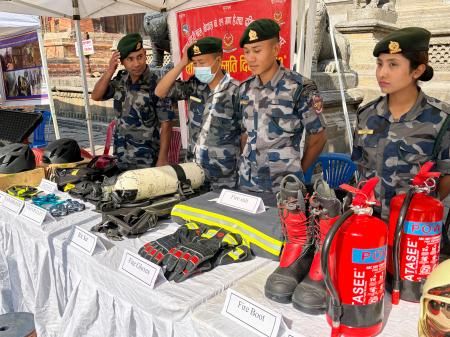Nepal Earthquake: Reflecting on Disaster Relief and Future Preparedness
The devastating 2015 Nepal earthquake, measuring 7.8 on the Richter scale, left an indelible mark on the nation. More than 8,000 lives were lost, and countless others were injured and displaced. While the immediate aftermath saw an outpouring of international aid, reflecting on the disaster relief efforts reveals crucial lessons for future preparedness and global humanitarian response. This article examines the successes and shortcomings of the relief operation, highlighting key takeaways for disaster management worldwide.
The Immediate Response: A Torrent of Aid and Challenges
The initial response to the Nepal earthquake was swift, with numerous nations and organizations rushing to provide aid. This included:
- Search and rescue teams: International teams worked tirelessly to locate and rescue survivors trapped under rubble.
- Medical supplies and personnel: Hospitals were overwhelmed, necessitating the rapid deployment of medical professionals and essential supplies.
- Emergency shelter and food: Providing temporary shelter and food to the hundreds of thousands displaced was a monumental task.
However, the relief effort wasn't without its challenges:
- Accessibility: The mountainous terrain and damaged infrastructure severely hampered access to affected areas, delaying aid delivery.
- Coordination issues: The sheer volume of aid and the involvement of numerous actors led to coordination difficulties and, in some cases, duplication of efforts.
- Logistics: Getting aid to remote villages proved exceptionally challenging, requiring innovative solutions such as helicopter drops and mule transport.
Long-Term Recovery: Rebuilding Lives and Infrastructure
The long-term recovery phase presented its own set of complexities. Rebuilding homes, schools, and hospitals required significant resources and expertise. The process highlighted the importance of:
- Community participation: Engaging local communities in the rebuilding process ensured that the new infrastructure met their specific needs and was sustainable.
- Sustainable reconstruction: Building structures resilient to future earthquakes was paramount, requiring adherence to strict building codes and the use of appropriate materials.
- Economic recovery: The earthquake devastated Nepal's economy, necessitating support for businesses and job creation initiatives.
Lessons Learned: Improving Disaster Preparedness
The Nepal earthquake provided invaluable lessons for improving disaster preparedness and response globally:
- Early warning systems: Investing in robust early warning systems can significantly reduce casualties.
- Building codes and regulations: Strict enforcement of earthquake-resistant building codes is crucial for minimizing structural damage.
- Community-based disaster risk reduction: Empowering communities to participate in preparedness and response activities is essential.
- Improved coordination mechanisms: Establishing clear communication channels and coordination protocols among different agencies is vital.
- Capacity building: Training local personnel in disaster response and management builds long-term resilience.
Looking Ahead: A Call for Enhanced Global Collaboration
The Nepal earthquake serves as a stark reminder of the devastating impact of natural disasters. While the international community responded with commendable generosity, improving disaster preparedness and response requires a concerted, collaborative effort. This includes:
- Increased funding for disaster preparedness: Investing in preventative measures is far more cost-effective than responding to a disaster.
- Strengthening international partnerships: Effective disaster response necessitates collaboration between governments, NGOs, and international organizations.
- Technological advancements: Utilizing technology for early warning, assessment, and communication can greatly enhance efficiency.
The Nepal earthquake was a tragedy, but it also offered a profound opportunity for learning and improvement. By reflecting on the successes and failures of the disaster relief effort, and by implementing the lessons learned, we can better prepare for and respond to future disasters, minimizing their devastating impact. Let's work together to build a more resilient world.
Keywords: Nepal earthquake, disaster relief, earthquake preparedness, humanitarian aid, disaster response, Nepal reconstruction, building codes, early warning systems, community resilience, global collaboration, natural disaster, seismic activity.
